Many thanks for the immediate replies to both of you!
- Why are you getting in to modular? Sound design? Getting away from the computer? Composing? You can have more than one reason, and they can change, but it's good to lay out a bit of a vision first, to help guide your decisions..
You're absolutely right. I should have mentioned that. Sorry.
To be totally honest, my idea to step into the modular world was triggered by softube's Modular, which I had been using for a few weeks. And after fiddling around on my bunch of hardware synths for quite a few years and collecting software more then getting the real fun out of both really for a longer time, the Modular software immediately gave me such a deeper look and understanding in Synthesis then anything before, I fell in love with the idea of a modular hardware system.
Also the idea of an ever changing open system quite got me.
- How big a rack to eventually want to head towards? If you want to have something small, then maybe the 2S and rackbrute would be all you ever need. If you want eventually build a huge rack, then a the Moog and and a 6U rack is probably a good starting point, because you can resell the rack and get a bigger one later.
Atm I could image of a double 6U system like Arturia offers them. Starting with one of course.
- Are you interested in playing the rack at all? Or just controlling it externally? .
Both of it.
I like the idea of getting hand on the system as well as keeping some advantages from working with the computer.
Besides I might benefit from some pieces of software like the wonderful Buchla stuff in Softube Modular e.g. and use that together with the new hardware. Cause assumingly I will never have the chance to get my hands on a piece of such gear in real life.
As for starter modules, you probably want modules that don't duplicate functionality of your semi-modular. Wasp is cool, but you will already have good filters. The Moog has a noise source. EG is a good idea. Passive mults are useful. An extra VCA or two would probably be useful. It's probably not a terrible idea to think about a Disting mk3/4, because those things are small, can do nearly everything, and you can use them to figure out if you really need that new module that you think you need..
-- naught101
Thanks again!
Your first step is going to be a semi-modular synth. Cool. They come in two basic flavors... even though they aren't technically the same. The first is a true semi-modular synth. It's stand-alone in its own case with its own power supply. The other notion is a "synth-voice" which is a Eurorack module that's a complete synthesizer. You'll find both out there so take a look around.
If you buy a true semi-modular that can be mounted in a Eurorack case... don't mount it in the case! At least if you're starting out. There's no reason to do so unless you're looking to be mobile often. Use the saved rack space to build your Eurorack module collection.
Many thanks for the advice.
I thought of integration for the start and maybe get the synth back to it's case some day when I am completely lost in a mountain of moduls later... ;) Am a big friend of some kind of a nice order on my desk btw.
The Moog Mother is a good choice. There's also the Behringer Neutron, Behringer Crave, Minibrute (no keyboard), and others. I'd consider your budget and your skill level. If you're new to synths or analog then I'd start out small and cheap and THEN start adding RackBrute or another case later. Don't try and buy everything all at once. You'll probably spend a lot on stuff you either won't use or won't care to use. The Moog's big advantage (other than that Moog-sound) is that it has a built in sequencer.
I never used a Moog before, only a couple of software clones, so for a synth lover from the early 80s on, which of course could never afford all these childhood dreams in those days, there might be kind of a nostalgic aspect in my decision as well.
For your rack... consider effects like reverb, delay, ring modulation etc. You may also want modules like logic (AND,OR, etc.), attenuverters, small DC coupled mixers, filters that are unlike what you have in your semi-modular, low pass gates, or even a complex oscillator.
-- Ronin1973
Many thanks again.
I guess one of the first modules will be an ES-3.
My soundcard got ADAT, but unfortunately is not DC-coupled, so that should be a good idea to get closer to my idea of building kind of a hybrid modular system. At least for the first time.
What I could not make out so far is, whether or not I will have to use ES' prog Silent Way for that. But I guess, that will not be to hard to find out.
First one could indeed best be a complex OSC. I get that point.
I found MI's Braid quite useful as a software solution. Or maybe something like Erica Synth's Black Wavetable VCO.
I would really love to read to any further concrete suggestions.
For I had to learn, that I'm not the kind of guy, which will write dozens of good selling songs any more in his older days, that I am not a second Schneider, Hütter or Bartos unfortunately, for me it's all about making some wonderful strange "noise", the most extraordinary "blips", "zipps" an "zapps", surprisingly glittering rhythmic patterns evolving over and over to get lost in hopefully.
Hopefully. ;)

